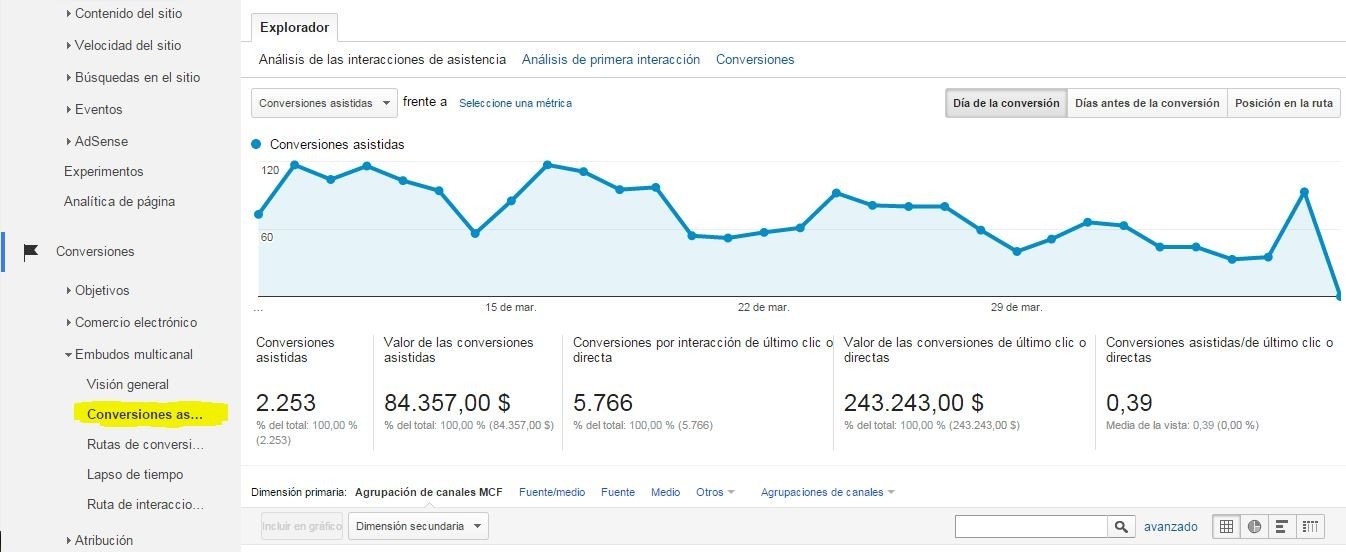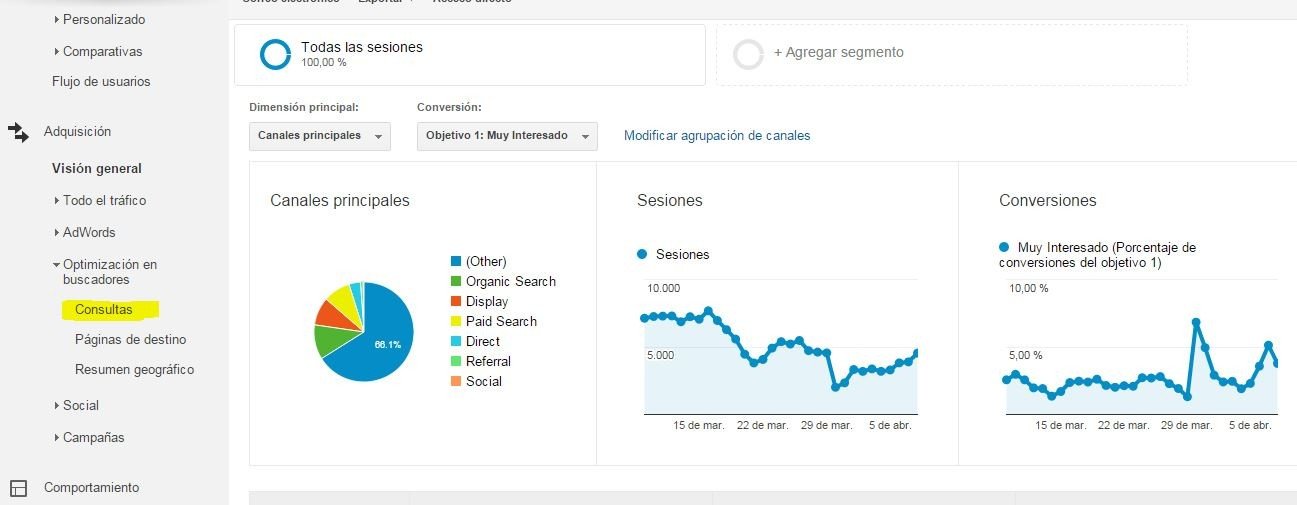Marketing de Resultados: el ROI del Branding
¿Pueden medirse los resultados de las campañas de marca en AdWords?
Impulsar y mantener la notoriedad de una marca es parte necesaria, aunque no suficiente, del éxito de la estrategia de marketing online. Pero lo que no se mide no se puede mejorar… ¿ofrecen las campañas de marca resultados medibles? ¿Es posible calcular el ROI del branding?
El principal objetivo de los esfuerzos de marketing en AdWords es un resultado medible: la conversión. Vamos a centrarnos en las campañas de marca más habituales con AdWords, en cómo ejecutar la medición y las dudas que se pueden presentar en el proceso.
Tipos de campañas de marca
Entre los tipos de campañas que Google describe como de “respuesta indirecta” o de “branding” destacamos:
- Publicidad en la red de Display
- Publicidad en Youtube
Los resultados de ambas campañas se pueden medir, pero a menudo no encontramos un volumen adecuado de conversiones que justifique la inversión. Sin embargo, estas campañas influyen en el rendimiento de la web y en el resto de campañas de marketing, potenciando sus resultados.
Es aquí donde podemos establecer patrones de medición para ver la eficacia del branding con AdWords más allá de la propia campaña.
¿Cómo medir el branding en AdWords?
Existen múltiples KPIs que nos pueden ayudar a analizar el rendimiento de las campañas de marca. Debemos tener en cuenta a la hora de valorar los resultados la fase en que nos encontramos a nivel de branding. Para medir necesitamos un volumen de datos crítico que nos permita sacar conclusiones, algo que no podemos obtener en la fase de pre-lanzamiento o lanzamiento de una marca. Por ello, la fase más apropiada para la medición de resultados de ROI es la de post-lanzamiento. Si queréis saber más sobre estas fases, os invito a leer este artículo sobre branding con AdWords.
Para este estudio en particular sólo analizamos los indicadores más relacionados con nuestro objetivo principal: aumentar el beneficio de la empresa a través del marketing de resultados.
1. Macro Objetivo ROI:
-
KPI: Conversiones Directas
Conversiones registradas por la plataforma de AdWords o conversiones procedentes de Adwords según Analytics (Difieren los criterios de atribución).
-
KPI: Conversiones Asistidas
Para medir las conversiones que llegan a través de las campañas de marca disponemos del informe de conversiones asistidas, dentro del módulo Conversiones > Embudos Multicanal
En este reporte podemos ver el número de conversiones que un canal ha ayudado a completar.
En la ruta hacia la conversión pueden intervenir diferentes canales. Este informe es increíblemente útil cuando se trabaja desde el enfoque de marketing de resultados. Contabilizan como conversión asistida todas aquellas conversiones en las que ha intervenido un canal, y que no procedan de la última interacción.
Si la configuración es correcta, aquí podemos ver cuántas conversiones ha asistido el canal Display. Dentro de él, utilizando como dimensión secundaria “Campañas” veremos cuántas conversiones ha asistido cada una. Aquí encontraremos las campañas de AdWords para Vídeo (Youtube) y de Display que hayamos configurado.
Es muy interesante en este informe el ratio de conversiones asistidas / conversiones directas que resume qué papel juega un canal determinado. Si se acerca a 1 significa que el canal asiste y finaliza conversiones en la misma medida. Valores mayores reflejan que el canal asiste más conversiones de las que finaliza.
Una vez contamos con el volumen total de conversiones (directas + asistidas) podemos calcular un CPA especial y obtener el ROI de la inversión en campañas de marca.
2. Micro Objetivo Notoriedad (Brand Awareness):
-
KPI: evolución del Nº de consultas de búsqueda por términos de marca.
Encontraremos las consultas de búsqueda en el módulo de Adquisición>Optimización en buscadores>Consultas.
Una vez ahí podemos filtrar por nuestra marca o término de marca y ver la evolución de las impresiones desde que activamos las campañas de marca.
Debemos fijarnos en la tendencia más que en los números, por las limitaciones de la plataforma (not provided).
Asimismo, si tenemos una campaña de marca activa en Search podemos hacer el seguimiento de las impresiones y debemos ver un crecimiento vinculado a la activación de las campañas de marca.
-
KPI: evolución del Nº de Visitas por Tráfico Directo
Con frecuencia mencionamos la url de la web en las campañas de marca, por lo que un aumento de la notoriedad genera lógicamente un incremento del tráfico directo.
Siguiendo la evolución de esta métrica, en paralelo a la evolución de nuestras campañas, podemos determinar si hay una influencia directa.
Estos KPIs funcionan como micro objetivos de nuestro objetivo principal, la conversión.
Dudas en la medición de campañas de marca
Aunque podemos clarificar el volumen de conversiones que un determinado canal ayuda a completar, no podemos saber con certeza lo valiosa que es esa intervención ¿habría convertido el usuario igualmente si no hubiera intervenido en su camino un determinado banner?
Existen herramientas avanzadas que facilitan al máximo la “deduplicación” de los datos, evitando asignar a un canal conversiones generadas por otro, pero hasta ahora es imposible saber qué peso real tiene cada canal en la decisión de compra (o registro).
Por otro lado, diferentes plataformas ofrecen distintos modelos de atribución, generando discrepancias (último clic directo, último clic indirecto…). Estas son las limitaciones más importantes que podemos encontrarnos en la medición de campañas de marca. Desde el punto de vista del performance marketing o marketing de resultados:
“La solución pasa por definir un modelo personalizado de medición que sea coherente con nuestro sector y trabajarlo de forma consistente en la evaluación de resultados”.
El módulo de atribución de Analytics nos permite jugar con las diferentes hipótesis de atribución, pudiendo diferenciar los resultados por el momento en que se da la interacción con un determinado canal, pero esto da para un post más ¡o unos cuantos! 😛





